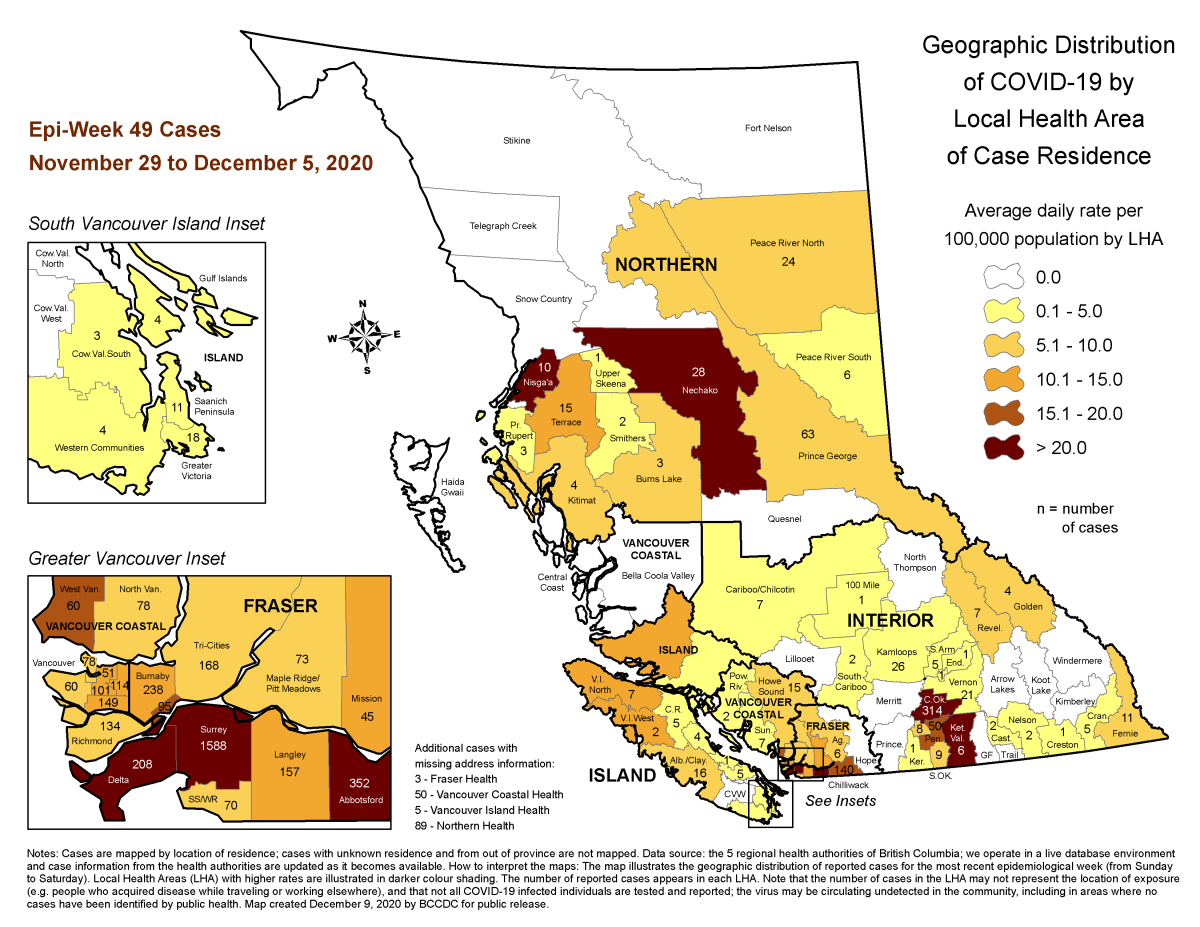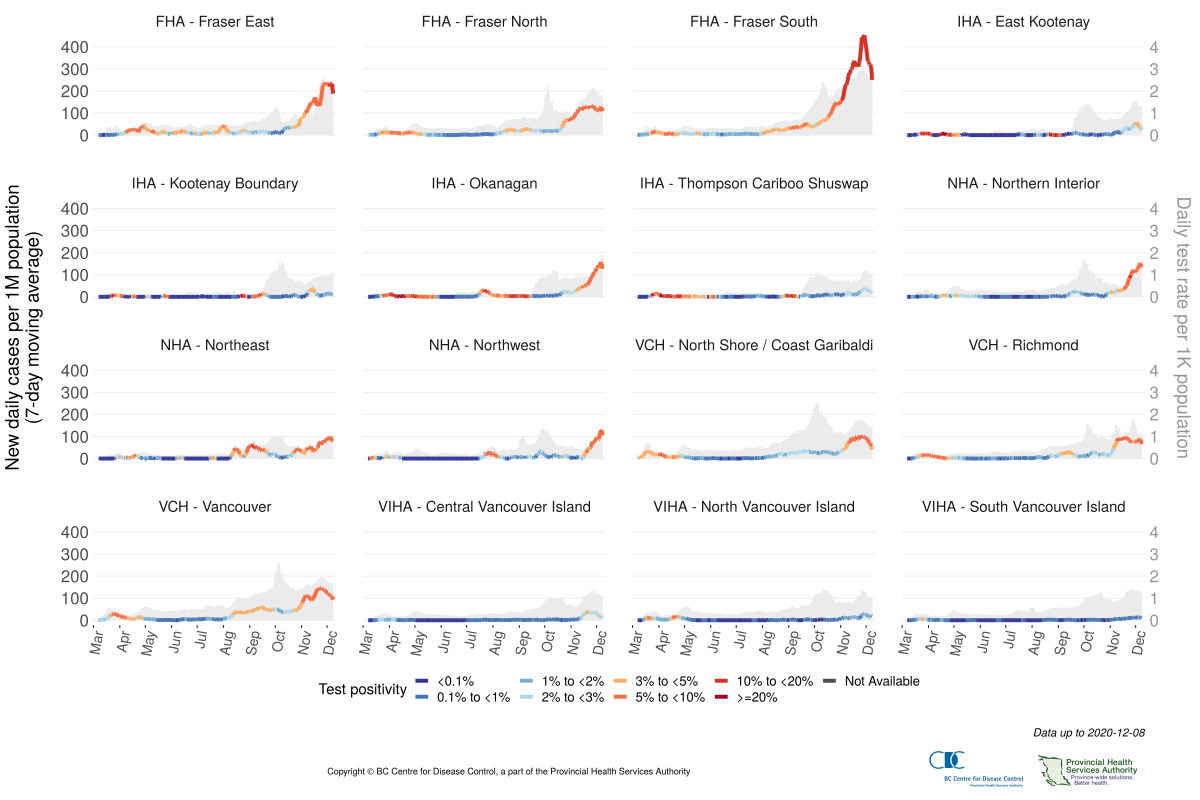British Columbia health officials are now releasing more detailed data on the spread of COVID-19 in the province’s communities.

As of Thursday, the B.C. Centre for Disease Control will now report case data by local health area, which in some cases breaks the information down by city, or even portions of cities, on a weekly basis.
That data was previously only reported monthly.
Under the new reporting format, COVID-19 hot spots become immediately visible.
For the week of Nov. 29 to Dec. 5 — the most recent reporting period — Delta, Surrey, Abbotsford, the Central Okanagan, Kettle Valley, Nechako and Nisga’a regions immediately stand out as having more than 20 cases per 100,000 residents.
The B.C. CDC has also launched a new COVID-19 Epidemiology App, which allows the public to break up case and test positivity trends by health service delivery area — regional categories that are not as detailed as local health area.
That data shows encouraging trends in new cases per million in parts of the Fraser Health region, but worrying increases in the Northern Interior and Northwest.
Members of the public and media have been calling for more granular data for months, but have faced resistance from health officials.

Get weekly health news
On Thursday, provincial health officer Dr. Bonnie Henry defended the province’s approach, citing privacy.
“We’re now at a point where you can’t re-identify somebody by the geographic area that they live in, because of the number of cases we’ve had,” Henry said of the release of more detailed data.
“It is unfortunate that in many communities now there is still remains stigma associated with this disease and we have heard from many people that it is a challenging time for them, and that they don’t always get support from their community when they are identified as having COVID-19.”
Henry also reiterated the province’s stance that people need to be aware that COVID-19 is a risk in all parts of the province, even if case numbers are not climbing in their area.
But the change in reporting hasn’t satisfied some critics.
Delta Mayor George Harvie pointed out that under the local health area model, the City of Vancouver is broken into six distinct sub-regions.
Delta, Langley and Abbotsford, by comparison, are lumped into a single block each, while Surrey is broken into two.

“We had over 900 cases in November. That’s more than Vancouver Island had for the whole pandemic, but they’re getting a breakdown,” Harvie told Global News.
Harvie and a group of other mayors south of the Fraser have sent five letters to the provincial government asking for more detailed data. He says they have not received a response.
“We’re just asking to be treated the same as Vancouver,” Harvie said.
“I’ve had people in Delta and Tsawwassen talk to me and say, ‘It’s not even around here is it?” and I’ve said, ‘No, it’s around here,” (and they respond) ‘Well, I don’t see any numbers.’ So we really need, from an education and awareness point of view, these numbers.”
Harvie pointed to the City of Toronto and Washington state as examples of jurisdictions that have been highly transparent in reporting COVID-19 data, with no harm to the public.

Toronto goes as far as to provide a live map of COVID-19 cases broken into dozens of individual neighbourhoods.
He said it’s information that residents need in order to make informed decisions.
Municipalities also need in order to better allocate scarce resources, conduct targeted enforcement and make planning decisions such as whether or not to open or close recreation facilities.
“It should be available for everybody to look for themselves,” Harvie said.











Comments